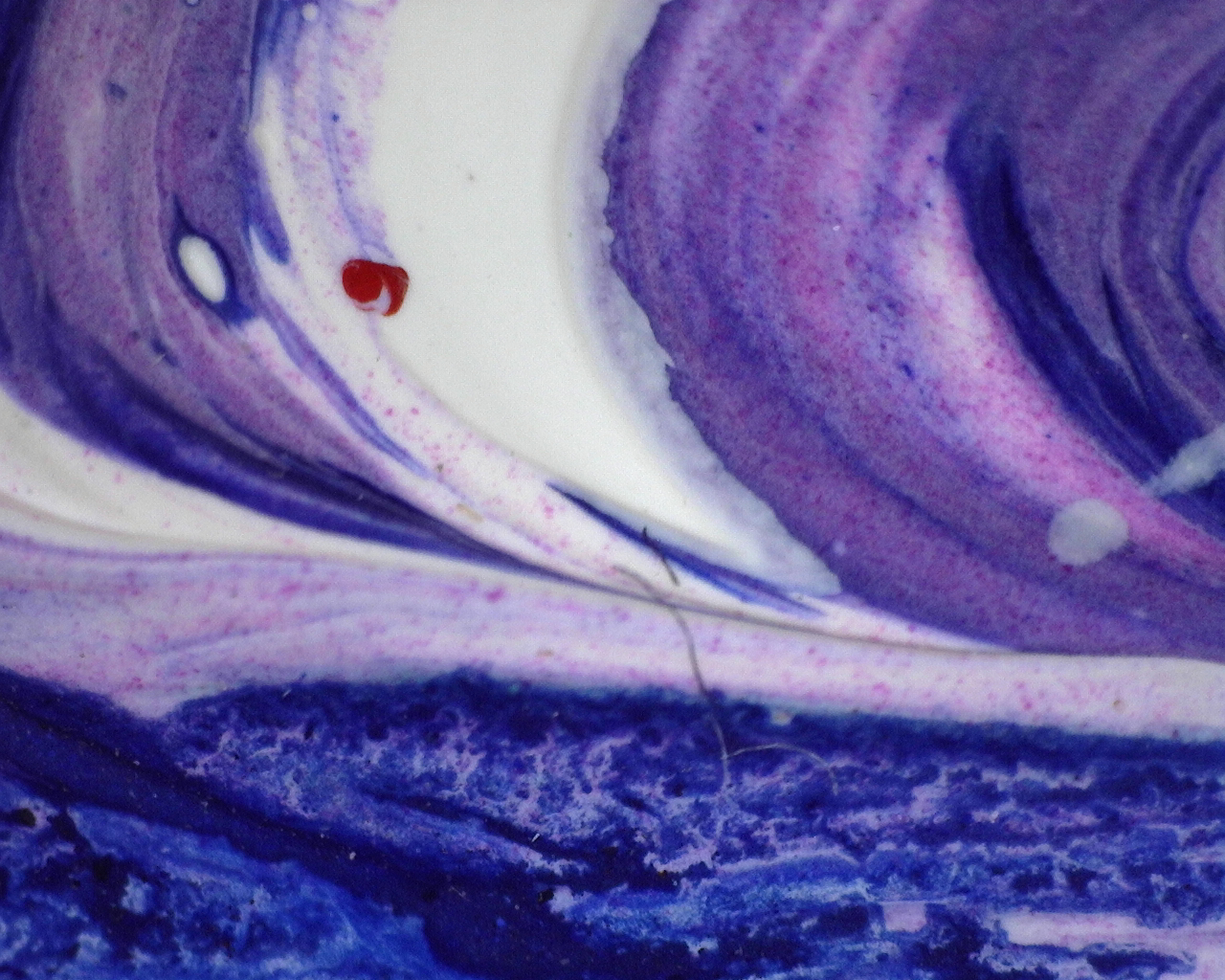This post continues on from our last post ‘Back to the Future’ which explored how the Natural History Museum developed remote access to some of its laboratory equipment during lockdown. Here, Dr Joyce Townsend from Tate, describes her experience of using the equipment from home.
As I spend another groundhog day at home during the third lockdown and imminent first anniversary of the Covid-19 pandemic, remote access for running instruments at the Natural History Museum (NHM) seems like a concept that was developed just in time. I’ve been an electron microscope user and driver at the NHM for some 10 years now – certainly long enough to have used 2 or 3 models of variable pressure SEM (scanning electron microscope), two software packages, and three operating systems. My samples consist mainly of paint fragments on self-adhesive carbon stubs, interspersed with larger and more complex paint samples mounted in resin blocks and exposed as cross-sections, and a few outliers such as canvas, metals and plastics. Since they come mainly from artworks, anything large enough on the stub to spot by eye in a good light – provided such a small specimen is also representative – is the right size for SEM-EDX. I do sometimes seek assistance with imaging of canvas, or newly-applied and solvent-rich paint (high vacuum would make short work of its topography!), but in most cases I am more interested in elemental analysis to prove or disprove identifications of inorganic pigments and extenders from optical microscopy, and sometimes to reveal unexpected elements. High-resolution imaging is not usually my aim for many samples. A knowledge of historic pigments used in the west, and of a great variety of historic manufacturing processes, enables good inferences to be made about the compounds in the samples, in nearly all cases. My samples are at least fairly robust, and there are no issues with shelf life or storage temperature, as I deliver them to a masked figure emerging from the premises on freezing mornings.
My fellow conservation scientists and all my other colleagues with humanities backgrounds were vastly impressed when I announced, ‘If you can control a Mars rover from Houston, Texas, you can surely drive an SEM from across central London’. Then I wondered whether Tate systems would ever communicate seamlessly with NHM systems. The set-up was lengthy and took a day of effort, and the process of logging in through two opposing firewalls is never fast – but it does work. I have always established the connection from my usual workplace whilst logged into both systems, which makes for a complicated workspace on a large single screen. It does enables instant storage of the snipped or screenshot spectra and locator images into PowerPoint format on our own system, ready to be dropped into artwork reports and interpreted with other data. This data capture is far more time-efficient that the different workflows I have used in the NHM processing lab over the years. There’s an additional big advantage in being able to access other data and artwork information instantly through the Tate system whenever I need more sample information, which cannot be done in South Kensington without hogging a number of workstations at one time to make it possible.
Running the SEM remotely now works very smoothly, in fact. This month I have used it for two full days. The JEOL IT500 has clearly been designed for the purpose: its stage movement and auto functions for focussing and brightness/contrast make it far more possibly to drive the SEM from one keyboard and no joysticks than it would have been for earlier models. It helps to pre-plan the sample holder map to include groups of samples of the same height and stub size, and to ask for large groups of samples to be placed on the larger holder that fits in the chamber. The filament may still occasionally fail in the midst of analysing the most interesting sample of the day, but the support team is on call (now by Teams as well as e-mail and mobile) and they will replace it and refocus to average sample height. Remote training for new users must be more challenging for them, but that sounds perfectly feasible too.
Written by Dr Joyce H Townsend, Senior Conservation Scientist, Tate




